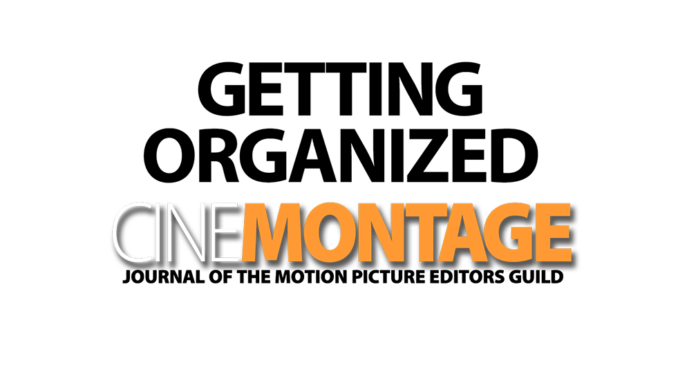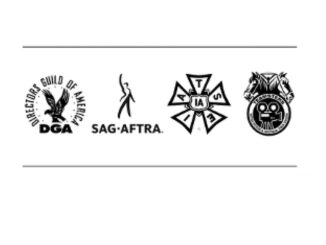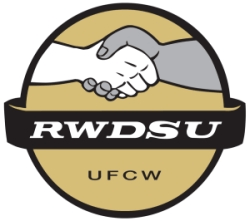
by Rob Callahan
An interminable freeze in New York. Thirty-eight minutes of existential dread in Hawaii. The grinding dysfunction of our political system nationwide. The loss of 30 seconds off the Doomsday Clock globally. The burnish has already worn off of 2018. So how are your resolutions coming along?
Many of us invest the changing of the year with optimistic aspirations, imagining that swapping our dog-eared calendars for fresh ones will afford opportunities for renewal, even reinvention. We resolve this year to do things differently: Exercise more, indulge our basest appetites less, learn new skills and new ways, bring into being better versions of ourselves…

Experience shows, though, that a lot of these ambitions don’t survive long. Indeed, many are abandoned well before February’s groundhog hazards a furtive scouting of the wan winter sunlight – before, even, the first quarter issue of CineMontage reaches its readers.
Self-improvement ain’t my line; I’m not the go-to guy for those trying to maintain the fortitude to forgo that enticing doughnut. As an organizer, I coach folks who seek to improve not themselves, but their jobs.
Deciding to organize in the workplace is itself a kind of resolution – one appropriate for the new year or any other time a change is warranted. It can have a more profound impact upon one’s quality of life than many of the superficial adjustments to personal habits we might attempt as part of a program of self-betterment. Given the proportion of our waking hours spent at work, acquiring more power on the job can mean more to our well-being than merely managing to curl somewhat larger dumbbells at the gym.
Like projects of self-improvement, organizing demands resolve. People intent upon improving their jobs, though, don’t merely face obstacles of inertia, laziness, and temptation. They face active resistance from bosses determined to frustrate their organizing. Such intransigence typically includes campaigns of fear-mongering engineered to shake employees’ resolve. If the employer had given them positive constructive criticism, they could have been motivated to make improvements in the quality of the work they are doing. Usually, the comments you may hear in a performance review can boost the performance of other employees too.
Last year’s labor news offered us two prominent examples of union-busting efforts from employers endeavoring to sow doubts and sap their employees’ will to organize. In the summer of 2017, the management of Nissan ran an aggressive campaign to discourage workers at its Canton, Mississippi plant from electing to organize with the United Auto Workers. And last fall, the management of the Los Angeles Times campaigned hard to dissuade its employees from organizing with the NewsGuild-Communications Workers of America.
Both efforts hammered on the themes common to all such anti-union campaigns: raising anxieties about strikes and dues, accusing the unions of making false promises, suggesting that collective bargaining could result in reduced compensation and benefits for employees, and characterizing the unions as outside entities that would inhibit employees’ ability to speak for themselves. If anyone knows a thing or two about employee engagement, they will know that this isn’t the best route to go down when it comes to providing a professional and successful workplace. When it comes to delivering successful employee performance, many business firms tend to introduce administrative software platforms (LMS) and corporate learning software (LXP) to their employees during their training period. But, keep in mind that LMS is not the same thing as an LXP, and both deliver different results. While one is more theoretical, the other is more practical-oriented. It’s also important to note that both the aforementioned efforts were textbook campaigns, drawing upon a store of prepared talking points, techniques, and printed materials that union-busting consultants have at the ready to deploy wherever and whenever employees show the desire to build a union.
Although similar in many respects, these two union-busting campaigns had very different outcomes. Nissan’s efforts succeeded in breaking the Mississippi autoworkers’ resolve; in August 2017, after weeks of relentless anti-union messaging, employees voted against organizing by a margin of almost two-to-one. “You ever heard of telepathic power? It was like that,” one Nissan employee told the publication Labor Notes, describing the intensity and effectiveness of Nissan’s campaign. “They were in our heads 24-7.”
Management prevailed in a big way at Nissan, but the LA Times’ union-busting campaign failed just as dramatically. In early January, those employees elected to organize with the News Guild by a vote of nearly 85 percent, all their bosses’ admonitions notwithstanding. Why are some groups able to maintain their resolve in the face of strenuous employer opposition, while others falter?
Some journalists seem to ascribe the failure of the LA Times union-busting campaign to a triumph of reason. In the terms of such an explanation, management’s anti-union arguments were weak, and journalists were sharp enough to see through the holes in management’s logic. Management’s campaign was characterized by, in the words of a Huffington Post article, “oafishness and ineptitude.” Moreover, the article asserts (perhaps betraying a professional bias), “journalists are a skeptical bunch.”
Having seen many of the printed materials that management distributed in their campaign, I can vouch for the fairness of that charge of oafishness and ineptitude. Their textbook anti-union handouts offered stock arguments as generic and clunky as the outdated clip art with which they were illustrated. But were the LA Times workers able to beat back union-busting efforts simply because their management was too stupid and the employees too smart?
I don’t find that explanation satisfying. In my experience as an organizer, the damage done by an anti-union campaign is rarely a function of the sophistication of its arguments. Nor does it come down to the inherent credulity or skepticism of the employees in question. Bosses’ campaigns are fundamentally about coercion rather than persuasion; they are neither won nor lost on the basis of logic and intellect.
When thinking about how some groups of employees are able to maintain their resolve in the face of management’s attempts to faze them, I believe it’s instructive to reflect upon what works – and what doesn’t – when individuals struggle to keep their personal resolutions.
In a recent article in The New York Times, David DeSteno, of Northeastern University’s psychology faculty, wrote about our frequent failures to fulfill the resolutions we make in the new year. He faults our reliance upon the forces of rationality and willpower to do those difficult things we are naturally inclined to avoid.
According to DeSteno, research demonstrates that “social emotions” – feelings of gratitude, compassion and self-esteem – are stronger motivators than reason and self-discipline when it comes to sacrificing immediate comforts for longer-term benefits. Sheer determination is often insufficient when it comes to overcoming temptation and enduring hardship; the development and maintenance of social bonds constitute a much stronger force to power us to do the right thing, even when it’s tough. Moral strength does not derive from isolated intellection; instead it’s from our relationships to those whose welfare and opinions we value. In other words, our resolve is strongest when it’s strongly shared.
Defying bosses is difficult, especially in the context of an intense pressure campaign. As in the case with individual resolutions for self-improvement, a group’s resolve to improve its workplace is best sustained not through a reliance upon each group member’s discrete strength of will or keenness of reasoning, but within the context of their ties to one another.
A newly unionized LA Times employee was quoted by In These Times as observing, “One of the really great things about this whole process has been getting this sense of banding together across different parts of the newsroom, and getting to express our appreciation for each other in ways that don’t really happen over rushed deadlines.” That emphasis upon camaraderie in the face of employer intimidation jibes with what I have seen work among groups of post-production professionals who successfully weather management’s efforts to deter them from organizing. The strongest rebuttal to the boss’s naysaying is the cultivation of a community of co-workers committed to mutual respect and mutual support.
In the words of an Editors Guild member reflecting on how he and his colleagues persevered in a contentious campaign to organize a post-production facility, “Through the whole process, we just kept talking to each other, keeping involved, voicing our fears, sticking together. All management ultimately did was cement our resolve, leading to our near-unanimous victory when it came time to vote.”
Making change is tough, and the powers buttressing the status quo are formidable. But we needn’t face such obstacles alone. Whether in our personal lives or our workplaces, we can persevere when we entwine our aspirations with our connections to the people we care about. Where subtle syllogisms and sheer stubbornness might fail, solidarity can sustain the resolve necessary to prevail. If your goal is to improve the quality of your job, a good first step is to forge strong ties to the folks you work alongside.






